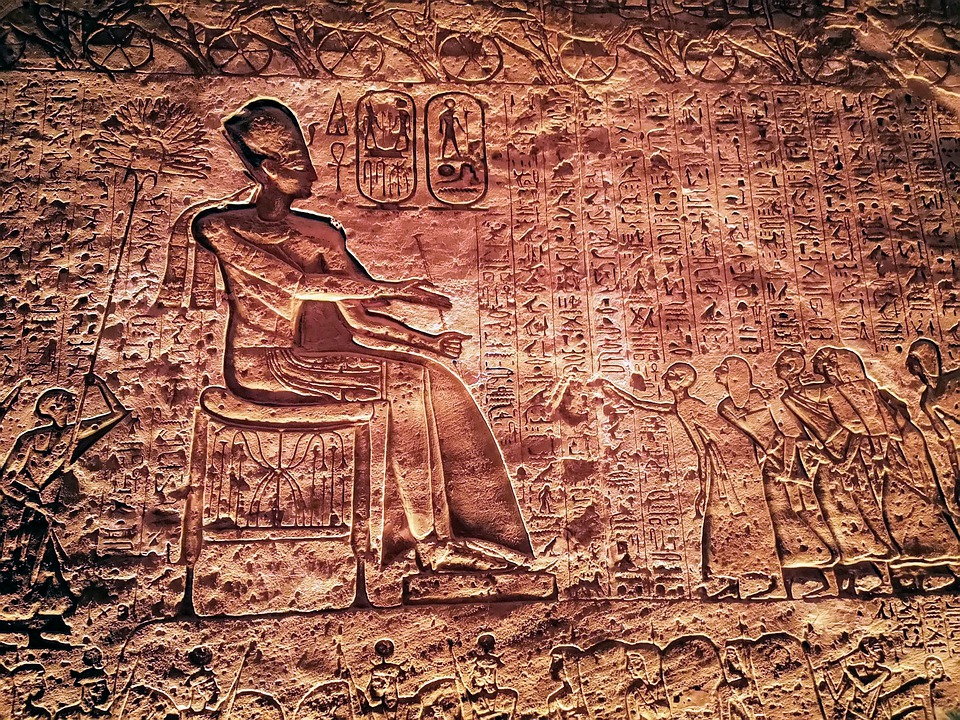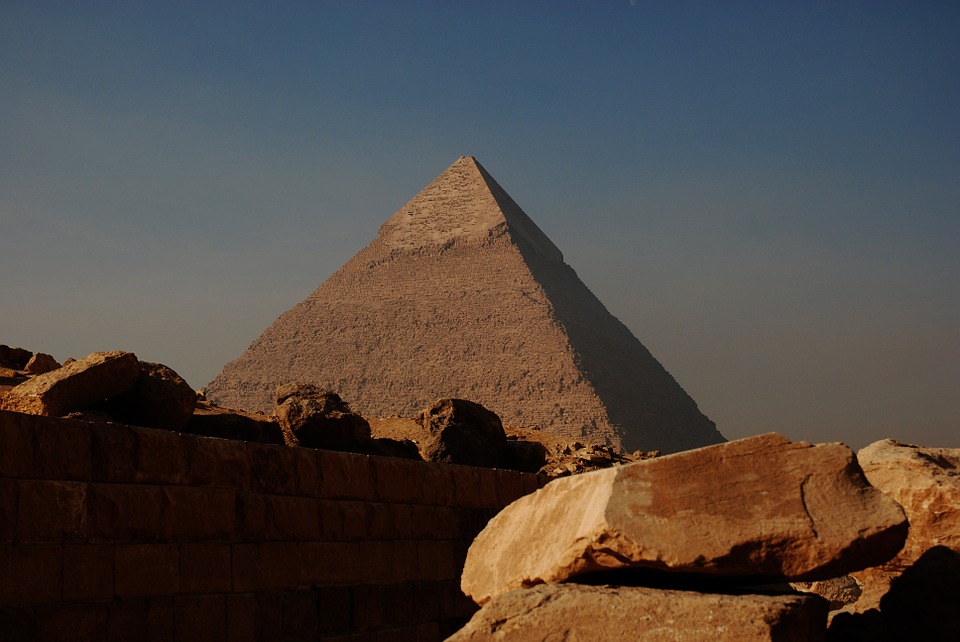In the 4th millennium BC from many small territorial formations – nomes – emerged two political associations – Upper Egypt and Lower Egypt (with capitals in Hierakonpol and Buto). The creation of the united state is attributed to the ruler of Upper Egypt, Meneses. The capital of the united state around 3000 BC was Memphis in the southern part of the Nile delta. By the end of the 4th and early 3rd millennium include the first monuments written in Egyptian hieroglyphic script.

In the 30th-28th centuries clashes began with the neighbors: Cushites (Nubians) in the south, Libyans in the west and nomads from the Sinai Peninsula in the northeast.
In the XXVIII-XXIII centuries BC the ancient Egyptian civilization was formed. The unity of Egypt was embodied in the power of the pharaohs, the unlimited masters of the whole country. The pharaoh was the head of the cults of all the gods of Egypt and was himself deified. An expression of this was the construction during this period of the pyramids – the tombs of pharaohs Djoser, Sneferu, Cheops (Khufu), Chephren (Khafra) and Menkerin (Menkaure). The Heliopolis cult of the sun god Ra, whose sons all pharaohs called themselves.

In the XXIII-XXI centuries BC. Egypt was divided into many nomes. The new unification of Egypt began with the rise of the nomarchs of Heracleopolis (in Middle Egypt), later the rulers of the southern city of Thebes were strengthened. Pharaoh Mentuhhotep I of Thebes became the ruler of united Egypt.
In the XXI-XVIII centuries BC the god Amon was declared the patron of the pharaohs. Amenemhat I moved the capital from Thebes to Ittaoui in the Fayoum oasis. The new disintegration of Egypt.
In the 18th and 16th centuries BC the Hyksos seized power in Lower Egypt and made their capital city Avaris in the eastern part of the Nile Delta. Yahmos I succeeded in destroying the rule of the Hyksos. In pursuit of them, he invaded Palestine, Syria. His successors established Egyptian rule in Palestine, Phoenicia, and Syria; the country of Kush up to the 4th Nile threshold became a province of Egypt.

Under Amenhotep III Ancient Egypt reached its greatest power. From provinces in Asia and in the country of Kush ancient Egypt received tribute in wood, copper, tin, lead, silver, as well as cattle, slaves, wine, jewelry, and ivory. From the country of Punt, where Queen Hatshepsut sent an expedition, incense was brought to ancient Egypt. During this period the Egyptian army became regular. The religious reform of Amenhotep IV (Ehnaton) proclaimed the cult of the single Egyptian god Aton (the solar disk). In honor of this god a new capital, Akhetaton, is built. After the death of Ehnaton in 1335 BC, the veneration of the old gods was restored, and Thebes again became the capital of Egypt. Fascinated by religious reform, Ehnaton abandoned the administration of the state. The decline continued after his death, but around 1290 BC, Pharaoh Ramses II restored Egypt’s power. He fought hard against the Hittites and their Syrian allies. The capital of Egypt under Ramses II was Per Ramses, built on the site of Avaris.
Regarding the dating in Egyptology there are many independent and relatively equally well-founded theories. For insufficiency of a source base for today we cannot be one hundred percent sure in absolute dates of this or that event of ancient Egyptian history. Most of the facts can only be talked about relatively. So, the beginning of the ancient Egyptian civilization is the beginning of the Early Dynastic Period, which occurred, as modern Egyptologists believe, in the 4th millennium BC. The end of Classical Egypt is known precisely – it is 31 BC, when the last Pharaoh of Ancient Egypt Caesarion finished his rule, and Egypt became a province of the Roman Empire.